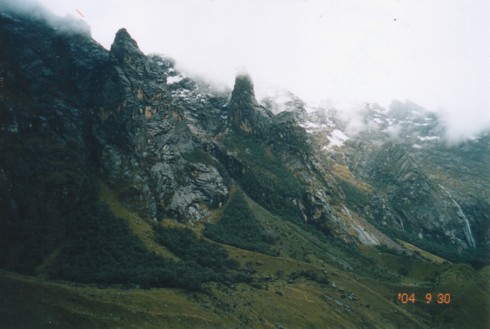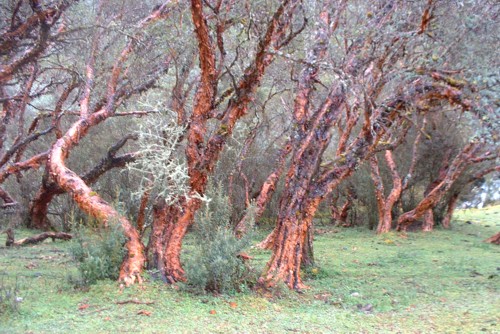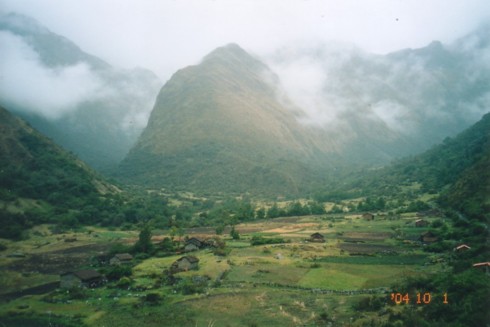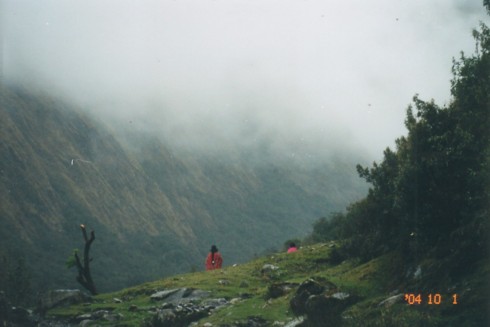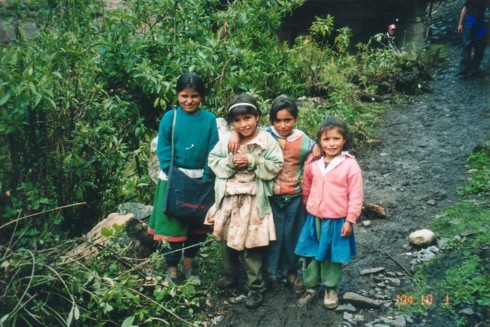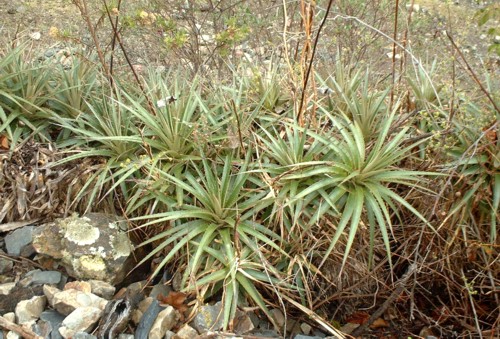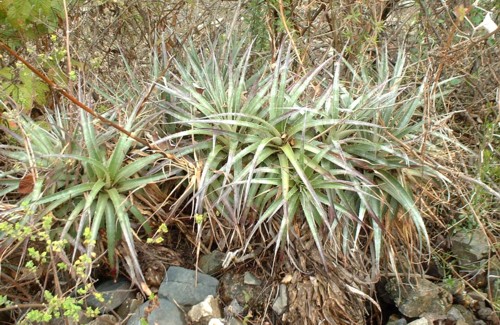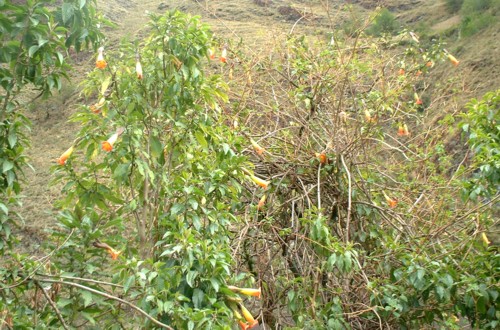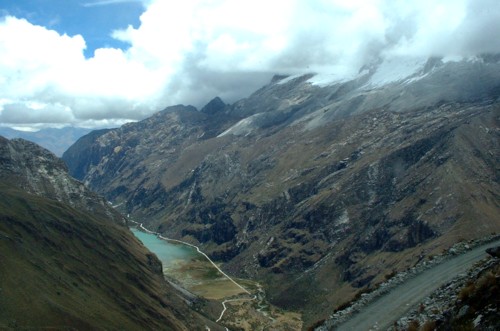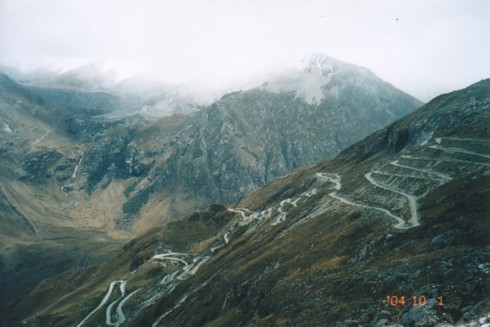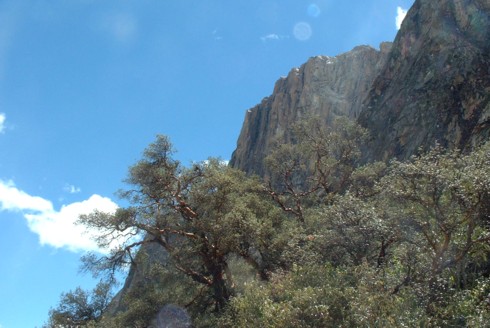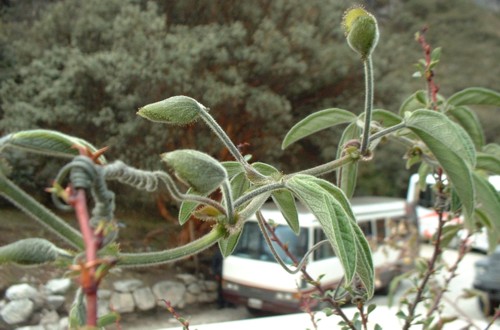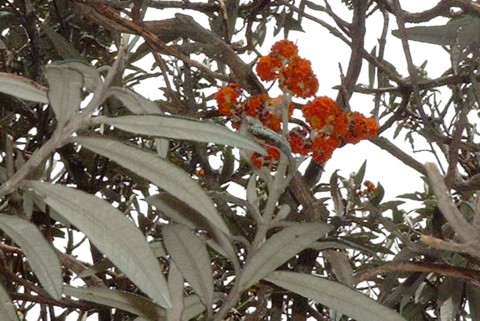|
Page 3 - The Cordillera Blanca II
After a brief break, it was now time to start down the wetter east side of the Cordillera Blanca, beginning with this dramatic steep stair.
Here's a really interesting bog plant. To think that it's happy up there in the perpetual coolness of 15,000'!
A close-up of the above plant. I think it may be an Azorella species.
Polylepis, which likes moisture, grew in larger groves and forests at quite high altitudes here - in this picture, up to 14,500'.
Now we descended to the valley floor, where a steady rain soaked everyone. Fortunately with the drop in elevation (now down to perhaps 11,000'), it was warm enough to continue hiking semi-comfortably. With the trail being very muddy, this descent was a bit rough on my knees. While mature Polylepis trees thrived, I noticed an absence of any young trees. This is surely a consequence of overgrazing by sheep and cattle, which sadly cannot be prevented even within the national park.
Our path passed through a small Quechua village, one of many isolated small villages high in the Andes lacking road access.
These people seem to rely quite a bit on raising livestock and sheep for their sustinence.
These poor kids didn't have a lot, but seemed happy enough.
The Puyas, which had stopped on the really wet valley floor, resumed again at about 10,000'. This is probably a moisture loving and not-very-hardy Puya.
A similar plant to the above, if slightly more silvery. No seeds on either.
Another interesting plant of uncertain identity. It's been suggested that this plant might belong to the Melastomataceae family.
This was really cool! Brugmansia sanguinea in habitat.... unchecked by frost and happy with the moist climate and perpetual coolness of 10,500' altitude.
An interesting Solanum species at about 10,500'. After a short climb back uphill, our trail ended at another road, where we waited for our bus.
A closer shot of the flowers and leaves of the above very cool Solanum.
Our road, it turned out, didn't lead us down out of the mountains, but back up, switchback after switchback, to a pass where, if it had been sunny, we could have seen a stunning view of Huascaran and the larger glaciers. At 15,700', it is the world's highest driveable pass, and the view back to the east side of the mountains, shown here, would have been breathtaking if there had been any air up there.
The switchbacks on this side of the pass were even more dramatic. It took a long time, but one switchback after another, we finally reached the valley floor with the lake pictured above.
The sun greeted us once again on the dry side of the mountains - I'm not sure if the Polylepis sp. pictured here is actually more blue in color than those we saw earlier, or if that is just what it looks like in the sun. The big white thing at the far end of the lake is some kind of alluvial deposit. I'm not sure exactly, but I think this lake is at about 12,000'.
More beautiful Polylepis trees. A closer look at those mountains would show that they are covered in bromeliads.
Another Passiflora species.
This tree-like Buddleja had knock-your-socks-off deep red flowers (the pic doesn't do it justice) and nice leaves too! I really need to go back and collect this sometime...
A Bomarea species growing with shiny Polylepis leaves. I had seen this Bomarea earlier, growing as high as 13,000', but my first pictures didn't turn out to be in focus. |



